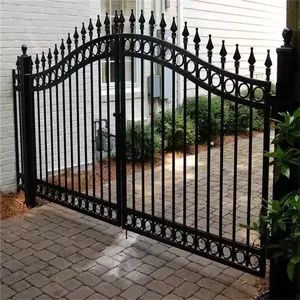
1.2m 1.5m 1.8m Height Hinge Joint Type Cattle Fence Mesh High Strength Hot Dipped Galvanized Deer Fencing Wire Mesh


Factory Wholesale Home Garden Fence And Gate Hot Sale Removable No Dig Swimming Pool Wrought Iron Fence


















The concept of a cattle kraal fence is integral to livestock management, providing a secure enclosure for cattle. This agricultural staple is pivotal for farmers and ranchers, ensuring the safety and organization of their herds. The design and functionality of these fences cater to the containment and protection of livestock, preventing escape and predation.
Cattle kraal fences come in various materials and designs, each serving a specific purpose. The common materials include galvanized iron, which offers durability against weather conditions, and wire mesh, known for its flexibility and strength. The construction of these fences can range from simple barbed wire to intricate mesh designs, each providing different levels of security and ease of installation.
A cattle enclosure is not just a barrier but a well-thought-out installation that can be eco-friendly and waterproof. Its features often include ease of assembly and maintenance, ensuring that it can be set up in various terrains and environments. These fences are versatile, used not only in farms but also in sporting areas and along highways, adapting to different containment needs.
The robust design of a livestock fence is essential for withstanding the physical demands of cattle and the harshness of outdoor elements. A well-constructed cattle barrier is coated—be it powder, PVC, or other non-toxic options—to enhance longevity and minimize maintenance. The design considerations also ensure that the fences are safe for the animals, preventing injury with smooth finishes and stable fixtures.
Selecting the appropriate cattle kraal fence involves considering the specific needs of the livestock and the property. Factors such as the size of the herd, the topography of the grazing area, and the climate all play a role in determining the most suitable fence type. Suppliers offer various options, from high-tensile wire to solid panels, each with its own set of features for different applications.
In today's agricultural practices, sustainability is a key factor. Many cattle fences are designed to be eco-friendly, contributing to sustainable farming practices. These fences can be recycled and are often made from materials that have a minimal environmental footprint, aligning with the global move towards more responsible farming methods.